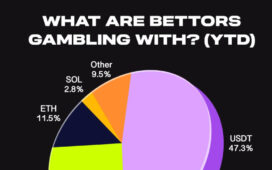Here’s the latest currency news from our partner Moneycorp, to help you find out what your money is worth.
GBP
Sterling weakened at the tail end of last week following the Bank of England’s decision to cut rates 25 basis points to 5.00%. The Monetary Policy Committee voted 5-4 in favour of a cut, with Governor Andrew Bailey leading the decision. However, BoE Chief economist Huw Pill voted against a cut and has warned against cutting rates aggressively soon, as there’s evidence prices may continue to be sticky, with the job of taming inflation potentially still having some way to go.
The Monetary Policy Committee will receive two more releases of inflation data before its next policy meeting. Although cuts are being priced in, the BoE expects inflation to rise back to around 2.75% towards the end of the year before falling again after that.
There’s currently a 40% probability of a rate cut at the next meeting on Thursday 19th September, down from 62.5% at the beginning of the week, with two cuts priced in before the end of the year.
This week was a quiet one regarding data, the only notable release was the UK’s latest Construction PMI, which came out on Tuesday. The reading came in above expectation, posting 55.3 ahead of the 52.5 forecast. Construction activity is increasing at its fastest rate in 26-months and has now been above the key 50 threshold for five consecutive months, indicating growth in the industry.
EUR
Flash CPI inflation data for the Eurozone was released last week. The data came in marginally above forecasts at 2.6%, against markets’ expectations of 2.5%.
Although inflation came out slightly higher than predicted, markets are still pricing in a cut at the European Central Bank’s next meeting on Tuesday 17th September. Markets have now fully priced in a 25-basis point cut at the following three ECB meetings, with some analysts reporting we could see as many as five cuts in a row from EU policymakers.
The euro has benefited from increased probability of rate cuts in the UK and US. Since last week, the single currency is up 1.8% against GBP and 1.2% against USD.
The primary data from the Eurozone this week comes from Germany; the latest month-on-month Factory Orders data was released on Tuesday, followed by Industrial Production figures on Wednesday and July’s CPI inflation data on Thursday. Factory Orders and Industrial Production both came in above expectations, with Factory Orders significantly higher than market forecasts of 0.4% at 3.9% and Industrial Production at 1.4% (ahead of the expected 1%). Germany’s CPI Inflation data was slightly higher than June’s reading, coming in at 2.3% for July, up from 2.2% in the previous month.
This commentary does not constitute financial advice. All rates are sourced from Bloomberg and forecasts are taken from Forex Factory.





